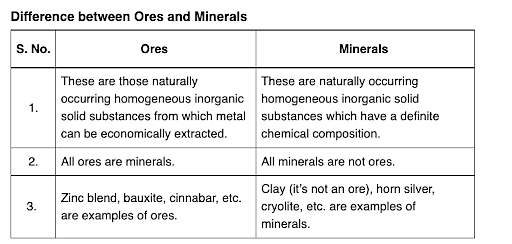The formula of a metal oxide is M0.96 O1. The fractions of metal that exists as M3+and M2+ ions in that oxide are respectively
The formula of a metal oxide is M0.96 O1. The fractions of metal that exists as M3+and M2+ ions in that oxide are respectively
0.083, 0.916
0.916, 0.083
0.88,0.12
0.12, 0.88
The Correct Option is A
Solution and Explanation
To solve the problem, we need to find the fractions of metal existing as $M^{3+}$ and $M^{2+}$ in the oxide with the formula $M_{0.96}O_1$.
1. Understand the oxidation states and formula:
Let the number of moles of $M^{3+}$ be $x$, and that of $M^{2+}$ be $(0.96 - x)$. The total negative charge from 1 mole of oxygen atoms (as $O^{2-}$) is -2. For the compound to be neutral, the total positive charge must also be +2.
2. Set up the equation for charge neutrality:
$3x + 2(0.96 - x) = 2$
Simplifying:
$3x + 1.92 - 2x = 2$
$x + 1.92 = 2$
$x = 2 - 1.92 = 0.08$
3. Find the fractions:
Fraction of $M^{3+} = \frac{0.08}{0.96} = 0.083$
Fraction of $M^{2+} = \frac{0.88}{0.96} = 0.916$
Final Answer:
The fractions of metal that exist as $M^{3+}$ and $M^{2+}$ are 0.083 and 0.916 respectively.
Top Questions on General Principles and Processes of Isolation of Elements
- In the extraction of iron using blast furnace to remove the impurity (X), chemical (Y) is added to the ore. X and Y are respectively
- TS EAMCET - 2025
- Chemistry
- General Principles and Processes of Isolation of Elements
- What is used for the Thermite Reaction?
- BCECE - 2025
- Chemistry
- General Principles and Processes of Isolation of Elements
- Which of the following compounds is used to cover the surface of a metallic object to prevent corrosion?
- KEAM - 2025
- Chemistry
- General Principles and Processes of Isolation of Elements
- Select the correct statement:
- KCET - 2024
- Chemistry
- General Principles and Processes of Isolation of Elements
- On reaction of Lead Sulphide with dilute nitric acid which of the following is not formed ?
- JEE Main - 2024
- Chemistry
- General Principles and Processes of Isolation of Elements
Questions Asked in TS EAMCET exam
- Match the following and choose the correct option from the lists given below:

- TS EAMCET - 2025
- Microbiology
- $7\hat{i}-4\hat{j}+7\hat{k}, \hat{i}-6\hat{j}+10\hat{k}, -\hat{i}-3\hat{j}+4\hat{k}, 5\hat{i}-\hat{j}+\hat{k}$ are the position vectors of the points A, B, C, D respectively. If $p\hat{i} + q\hat{j} + r\hat{k}$ is the position vector of the point of intersection of the diagonals of the quadrilateral ABCD, then $p+q+r=$
- TS EAMCET - 2025
- Vector Algebra
- If the sum of two vectors is a unit vector, then the magnitude of their difference is:
- A particle is executing simple harmonic motion with an amplitude of 10 cm. If the kinetic energy of the particle at a distance of 6 cm from the mean position is 100 J, then the kinetic energy of the particle at a distance of 2 cm from the mean position is
- TS EAMCET - 2025
- Waves and Oscillations
- Which of the following is an example of antifertility drug?
- TS EAMCET - 2025
- Chemistry in Everyday Life
Concepts Used:
General Principles and Processes of Isolation of Elements
What are Ores and Minerals?
Minerals are the naturally occurring, homogeneous inorganic solid substances. They are having a definite chemical composition and crystalline structure, hardness and color. For example, copper pyrite, calamine, etc.

Impurities in an ore are called gauge. The removal of a gauge from the ore is called concentration ore.
Several steps are involved in the extraction of pure metal from ores. Major steps are as follows –
- Concentration of the ore
- Isolation of the metal from its concentrated ore
- Purification of the metal